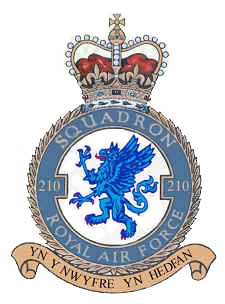
No. 138 Squadron RAF was a squadron of the Royal Air Force that served in a variety of roles during its career, last disbanded in 1962. It was the first 'V-bomber' squadron of the RAF, flying the Vickers Valiant between 1955 and 1962.
No. 515 Squadron RAF was a squadron of the Royal Air Force formed during the Second World War. It ushered in Electronic countermeasures (ECM) warfare, jamming enemy radar installations from October 1942 as the only such squadron in the RAF initially. Later in the war 515 Sqn was joined by other squadrons as part of No. 100 Group RAF. The squadron disbanded after VE day, when the need for such a specialised squadron had reduced.

667 Squadron ACC is a squadron of the British Army's Army Air Corps (AAC).

No. 666 Squadron was a Royal Air Force Air Observation Post (AOP) squadron associated with the Canadian 1st Army and later part of the Royal Auxiliary Air Force. Numbers 651 to 663 Squadron of the RAF were Air Observation Post units working closely with British Army units in artillery spotting and liaison. A further three of these squadrons, 664–666, were manned with Canadian personnel. Their duties and squadron numbers were transferred to the Army with the formation of the Army Air Corps on 1 September 1957
No. 282 Squadron was a Royal Air Force air-sea rescue squadron during the Second World War.
No. 587 Squadron RAF was an anti-aircraft co-operation squadron of the Royal Air Force from 1943 to 1946.
No. 246 Squadron RAF was a squadron of the Royal Air Force.
No. 353 Squadron RAF was a Royal Air Force squadron, active during World War II carrying out maritime patrol and transport tasks.

No. 210 Squadron was a Royal Air Force unit established in World War I. Disbanded and reformed a number of times in the ensuing years, it operated as a fighter squadron during World War I and as a maritime patrol squadron during the Spanish Civil War, World War II and the Cold War before it was last deactivated in 1971.
No. 512 Squadron was a Second World War Royal Air Force transport squadron.
No. 516 Squadron RAF was an army co-operation squadron of the Royal Air Force during the Second World War.
No. 520 Squadron RAF was a meteorological squadron of the Royal Air Force during the Second World War.
No. 293 Squadron was a Royal Air Force air-sea rescue squadron. During the Second World War the unit operated search and rescue missions for Allied aircraft operating over Italy.
No. 661 Squadron was a Royal Air Force Air Observation Post squadron associated with the Canadian 1st Army and later part of the Royal Auxiliary Air Force. Numbers 651 to 663 Squadrons of the RAF were Air Observation Post units working closely with Army units in artillery spotting and liaison. A further three of these squadrons, 664–666, were manned with Canadian personnel. Their duties and squadron numbers were transferred to the Army with the formation of the Army Air Corps on 1 September 1957.

No. 662 Squadron was a Royal Air Force Air Observation Post squadron associated with the 21st Army Group and later part of the Royal Auxiliary Air Force. Numbers 651 to 663 Squadrons of the RAF were Air Observation Post units working closely with Army units in artillery spotting and liaison. A further three of these squadrons, 664–666, were manned with Canadian personnel. Their duties and squadron numbers were transferred to the Army with the formation of the Army Air Corps on 1 September 1957. It is now an Apache Helicopter Squadron.
No. 285 Squadron RAF was a non-operational Second World War Royal Air Force squadron that operated a variety of aircraft to provide targets for anti-aircraft gun practice initially in the North Midlands and North Wales area.
No. 660 Squadron was a Royal Air Force Air Observation Post squadron associated with the 21st Army Group during World War II. Numbers 651 to 663 Squadrons of the RAF were Air Observation Post units working closely with Army units in artillery spotting and liaison. A further three of these squadrons, 664–666, were manned with Canadian personnel. Their duties and squadron numbers were transferred to the Army with the formation of the Army Air Corps on 1 September 1957.

No. 614 Squadron was originally formed on 1 June 1937 as an army co-operation squadron unit of the Auxiliary Air Force. It served during the Second World War first in this role and later as a bomber squadron. Upon reformation it served as a fighter squadron until the disbandment of the Royal Auxiliary Air Force on 10 March 1957.
No. 527 Squadron RAF was a radar calibration unit of the Royal Air Force between 1943 and 1958.
No. 528 Squadron RAF was a radar calibration unit of the Royal Air Force during the Second World War, active from June 1943 until September 1944.






